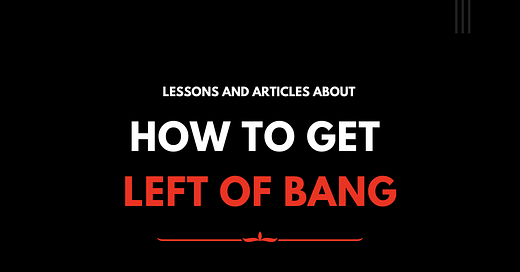Kinesics – Simplified
As we break down each section of the body throughout our kinesics class, analyzing gestures, postures, and expressions, we are given a window into a person’s mind. This analysis lets us figure out how you really feel in any given situation. It is the domain that everyone is waiting for, the opportunity to learn how to read body language. Being able to understand and predict a person’s intentions gives us the ability to tip the scales of any engagement in our favor.
Some people pick up how to read body language right away while other students look at all the different meanings that each gesture could have and become overwhelmed by the wealth of possibilities. When I first started learning, I was that guy. It took me some time to become comfortable and confident in my ability to read people. There are so many different gestures and expressions out there, that it seemed overwhelming. Then I learned how to make it easier.
When I am profiling and observing people, I break all kinesic cues into just a couple of different categories. The first question that I ask myself is, “Does this person look comfortable or uncomfortable?” Are his arms crossed because he is putting up a barrier? Are his arms crossed because he is sitting in a chair that doesn’t have armrests? Or are his arms crossed because he is cold? All answers could be correct assessments in different situations, but if you simplify it the scenario by figuring out if that indicator fits a cluster that shows comfort vs. discomfort, your assessments will be easier, faster, and more accurate. I ignore the face during this question but focus on the indicators below the shoulders. A person can focus on their facial expressions and try to put on the front that they are comfortable. The face can often times deceive you, but people rarely think to focus on what their hands and feet are doing.
The second question that I ask myself is, “Is the person trying to be dominant or submissive?” If I see people interacting with each other, I want to know who the dominant types are and who the submissive ones are. If, during a conversation, I see a person who is listening with slumped shoulders, their hands clasped gently behind their back, a slight lean forward with the torso, thus making them look smaller (almost apologetically), I can reasonably assume that this person is the submissive one in the group. Comparing that person with the other member in the group who is standing tall, possibly a slight lean forward (but making themselves look larger instead of smaller), with either their hands on their hips or using them to point and give direction.
We can apply this to our baseline for a Starbucks. I expect to see all types of behavior (dominant, submissive, comfortable and uncomfortable) from a customer, which ties into where they are in the customer process. Want to read more about the process? When a person comes into the store, especially when it is crowded and the line is tightly packed, I expect to see uncomfortable behavior. With strangers inside of their intimate proxemic zone, less than 18 inches away from them and behind them, I should see barriers and mild uncomfortable behavioral cues due to that proxemic invasion.
However, once a person gets to the cashier to order, I expect to see dominant behavior as they are telling the employee what they want. I will usually see hands on the counter, making themselves look larger and a slight forward lean in the torso as they place their order. This isn’t a conscious thought, but it is very often the position we observe from customers, as they are in charge of the interaction.
Once their order is complete, the person will usually revert back to submissive behavior. This is likely due to the person being completely at the mercy of the people making their drink without any real control over the situation. Submissive behavior may be replaced by uncomfortable behavior if the person is frustrated or impatient with the time that the process is taking.
Once they have their drink, I would expect to see dominant behavior from a person again as they pick up their order and either find a seat or leave the store. They are no longer in a forced submissive role at this point.
By categorizing all kinesic cues in this much more simple method, I no longer have to understand each indicator individually, but can observe the whole body and understand their emotional state. Depending on which study on body language you read, anywhere from 60-90% of all communication is non-verbal. There is no need to complicate the process. The goal is simply to understand what is being said.



